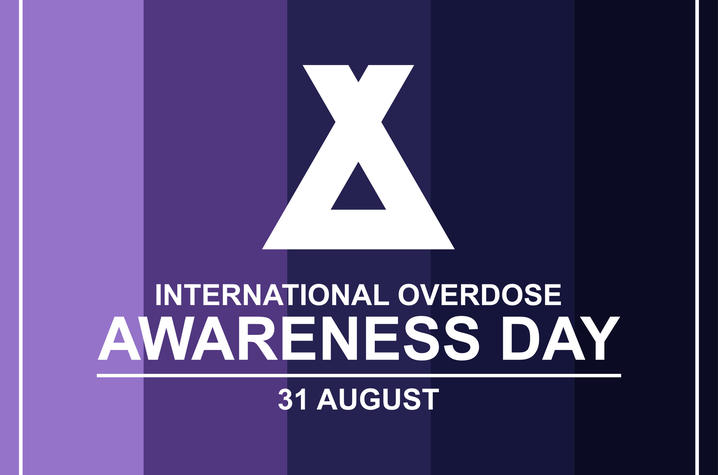KIPRC offers workplace overdose prevention resources

LEXINGTON, Ky. (Aug. 31, 2023) — In 2021, the highest number of workplace drug overdose fatalities was recorded by the Kentucky Fatality Assessment Control Evaluation (FACE) program since its establishment in 1994. The number of workplace drug overdose deaths in 2021 was triple that of 2019. Fortunately, 2022 saw a 61% decrease in workplace overdose fatalities in Kentucky from the previous year, which corresponded with the decrease of drug overdose deaths in Kentucky. This decrease in Kentucky is hopeful, and to continue this downward trend is vital. To recognize International Overdose Awareness Day on Aug. 31, the Kentucky Injury Prevention and Research Center (KIPRC) is highlighting resources on preventing workplace drug overdoses and supporting substance use disorder (SUD) recovery.
“We are glad to see that fatal overdoses decreased both in Kentucky residents in the general community and at work,” said Rebecca Honaker, program director for KIPRC's Kentucky Occupational Safety and Health Surveillance. Overdose fatalities in the workplace have fallen to seven deaths in 2022, comparable to the pre-pandemic level of six deaths in 2019. “Despite the decrease, workplace overdose deaths remain a significant concern,” said Honaker.
KIPRC’s Kentucky Occupational Safety and Health Surveillance (KOSHS) program released a Hazard Alert focused on fatal drug overdoses in the workplace. The Hazard Alert includes recommendations for employers on becoming a recovery-friendly workplace, starting with establishing recovery-friendly policies. In addition to offering information, screenings, resources, and referrals for workers at risk for substance use disorder, recovery-friendly workplaces also ensure that employees can seek treatment when necessary, allow for accommodations while they receive treatment, and support employees in recovery when they return to work.
Recovery-friendly employers seek out local community resources for SUD treatment and recovery support through the local health departments and other providers. Additionally, they provide naloxone in multiple places in the workplace to reverse opioid overdoses and collaborate with local health departments to train employees on administrating naloxone.
To expand on these recommendations and provide further guidance, the KOSHS program at KIPRC has developed a toolkit to assist small businesses in hiring and retaining employees in recovery from SUD.
The Kentucky Small Business Toolkit for Hiring Employees in Recovery provides employers additional ways to become a recovery-friendly workplace, including:
- addressing the stigma surrounding SUD.
- taking new approaches to recruiting employees.
- using tax credits, bonding programs, and community resources.
- promoting a business as a recovery-friendly employer and communicating what that means to current employees and job applicants.
To access the full toolkit, visit the KIPRC website.
For more information and resources to become a recovery-ready workplace, visit the U.S. Department of Labor’s Recovery-Ready Workplace Resource Hub.
KIPRC Resources
Visit findhelpnowky.org to find information about available space in treatment programs and providers based on location, facility type, and category of treatment needed.
Visit findrecoveryhousingnowky.org to find recovery houses with availability and resources for owners and operators of recovery houses.
For more information on overdose prevention strategies and programs, visit the KIPRC website.
KOSHS, an occupational surveillance program of the Kentucky Department for Public Health (DPH) and KIPRC monitors workplace fatalities and develops toolkits, fatality reports, and Hazard Alerts to provide targeted recommendations for workplace injury prevention.
To view the full Hazard Alert and past alerts, visit the KIPRC website.
KIPRC is a unique partnership between the DPH and the University of Kentucky’s College of Public Health. KIPRC serves both as an academic injury prevention research center and as a bona fide agent of DPH for statewide injury prevention and control.
As the state’s flagship, land-grant institution, the University of Kentucky exists to advance the Commonwealth. We do that by preparing the next generation of leaders — placing students at the heart of everything we do — and transforming the lives of Kentuckians through education, research and creative work, service and health care. We pride ourselves on being a catalyst for breakthroughs and a force for healing, a place where ingenuity unfolds. It's all made possible by our people — visionaries, disruptors and pioneers — who make up 200 academic programs, a $476.5 million research and development enterprise and a world-class medical center, all on one campus.




